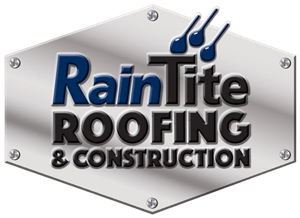Ensuring proper roof ventilation in your Rapid City home is crucial for maintaining a comfortable living environment, improving energy efficiency, and preventing a variety of potential roofing issues. Roof ventilation refers to the continuous flow of outside air through your attic space or roof assembly, which helps regulate temperature and moisture levels within your home. Without adequate ventilation, a range of problems could arise, such as mold and mildew growth, condensation, ice dams, and decreased shingle lifespan.
By understanding the importance of proper roof ventilation, you can make informed decisions that lead to a more comfortable, energy-efficient, and durable home in Rapid City. Armed with this knowledge, you’ll be better equipped to protect your investment and ensure the longevity of your roofing system.
If you need assistance in evaluating your roof ventilation or tackling other roofing repairs and replacements, RainTite Roofing & Construction in Rapid City is here to help. Our team of skilled professionals will walk you through the process and provide expert advice tailored to your home’s unique needs. Contact us today for a free consultation, and let us help ensure your home is well-ventilated and protected all year round.
The Role of Roof Ventilation in Preventing Moisture Problems and Promoting Energy Efficiency
Roof ventilation plays a critical role in maintaining a healthy indoor environment and promoting energy efficiency in your Rapid City home. By allowing fresh air to enter and stale air to exit your attic space, a properly ventilated roof can prevent moisture build-up that may lead to mold and mildew growth. Moisture can also cause wood rot and damage insulation, leading to higher energy bills as your heating and cooling systems work harder to maintain a comfortable temperature.
Proper roof ventilation can minimize the risk of ice dams during Rapid City’s harsh winters. Ice dams occur when warm air from your attic melts snow on the roof, causing water to flow toward the eaves, where it refreezes and creates a dam. This trapped water can then leak into your home and cause significant damage. Effective ventilation helps maintain a balanced roof temperature, minimizing the chances of ice dam formation.
Common Types of Roof Vents for Rapid City Homes
There are several types of roof vents available to homeowners in Rapid City, and selecting the right combination for your home will depend on the specific needs of your roof design and climate. Some of the most common types of roof vents include the following:
1. Ridge vents – These vents run along the peak of your roof, creating a continuous vent for hot air to escape. Ridge vents often blend in seamlessly with your roof, making them an aesthetically pleasing choice.
2. Soffit vents – Installed under the eaves of your roof, soffit vents draw in fresh air from the outside to replace warmer air in your attic space.
3. Gable vents – These triangular vents are installed on the gable ends of your roof, allowing air to escape from your attic.
4. Roof louvers – Also known as box vents, roof louvers are typically installed near the peak of your roof to help hot air escape.
5. Power vents – These motorized fans help exhaust warm air from your attic more quickly, but they do consume electricity.
Depending on your home’s design and size, you may require a combination of these ventilation options to ensure proper air circulation.
The Impact of Inadequate Ventilation on Your Roof’s Lifespan and Integrity
Failing to ventilate your roof properly can lead to a host of issues that can shorten the lifespan of your roofing system and threaten its integrity. Some of the consequences of inadequate roof ventilation include the following:
1. Mold and mildew growth – Excessive moisture can lead to mold and mildew, which can compromise your home’s indoor air quality and pose health risks to your family.
2. Condensation – High humidity levels in your attic can cause condensation to form, damaging insulation and structural elements like wood beams.
3. Decreased shingle lifespan – Inadequate ventilation can cause an increase in attic temperatures, leading to the premature aging of your shingles and a shorter lifespan for your roof.
4. Ice dams – In colder months, poor ventilation can contribute to the formation of ice dams, which can damage your roof’s structure and potentially cause leaks.
Addressing ventilation issues before they lead to more significant problems is vital for maintaining your roof’s overall health and performance.
Assessing and Improving Your Roof Ventilation System
To ensure your roof ventilation is functioning effectively, consider the following tips:
1. Inspect your attic space for signs of moisture, such as mold, water stains, or damaged insulation.
2. Measure the size of your attic and compare it to the recommended ventilation guidelines for your specific climate and roof type.
3. Ensure that your soffit and ridge vents are not blocked by insulation, debris, or other obstructions.
4. Check the condition of your existing vents for damage or leaks and replace them as needed.
5. Consult with a professional roofing contractor to assess your ventilation system and provide recommendations for improvement.
By regularly assessing and improving your roof ventilation, you can enhance the comfort and energy efficiency of your Rapid City home while prolonging the lifespan of your roofing system.
Conclusion
Proper roof ventilation is vital for maintaining a comfortable, energy-efficient, and durable home in Rapid City. It helps prevent moisture-related issues, ice dam formation, and premature aging of shingles, ensuring that your investment remains protected for years to come.
RainTite Roofing & Construction, your trusted local roofing company in Rapid City, is here to help with all your roofing needs, including ventilation solutions. Contact us today for a free consultation and safeguard your home throughout all seasons.

